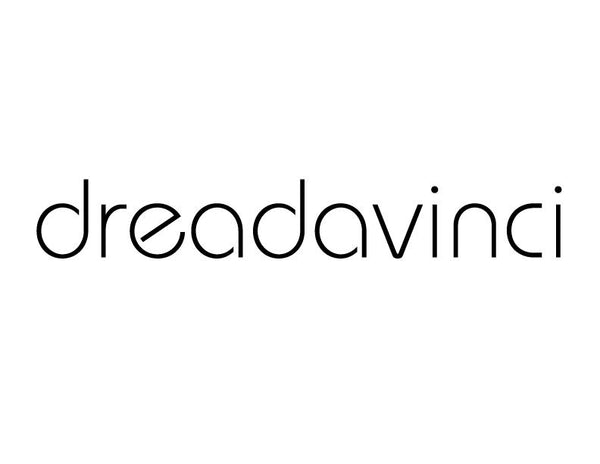In an era of surveillance capitalism, digital echo chambers, algorithmic oppression, and curated personas, the Renaissance has never felt so close. Two Florentine minds from centuries ago — Niccolò Machiavelli and Leonardo da Vinci — offer us a mirror, not just to the past, but to ourselves. They were masters of subversion, each undermining the dominant systems of their time with surgical precision. In 2025, their legacy is more than art or theory. It’s a code — and a call to arms.
Machiavelli: The Political Trickster in a Woven Cage of Power
Machiavelli is often misunderstood. The Prince has been treated as a tyrant's manual, but what if it was actually a warning dressed as a gift? A Trojan Horse of truth? Niccolò, cast out and exiled by the Medici regime, turned his political exile into creative freedom. He wrote not to flatter power, but to expose it. To decode it. His real audience wasn't Lorenzo de' Medici. It was us — the disillusioned, the marginalized, the thinkers ready to outwit empire.
When we read Machiavelli today, we're not just reading about princes and principalities. We're reading about tech billionaires, political influencers, media moguls, and the puppet strings behind every trending narrative. Replace "the prince" with "the algorithm" and suddenly his words take on a new tone:
"It is better to be feared than loved, if you cannot be both."
Is this not the ethos of clickbait culture? Fear-based media cycles? Politicians drumming anxiety to maintain control? Influencers weaponizing aesthetics to trigger envy and desire?
Machiavelli laid the blueprint for decoding power dynamics, not for glorifying them. His satire was sharp, his loyalty to truth cloaked in irony. He knew power corrupts by charm more often than cruelty. In a world obsessed with optics, he showed us the dark mathematics behind the illusion — and invited us to subvert it from within.
Leonardo: The Sacred Heretic Who Painted the Feminine Divine
Leonardo da Vinci wasn’t writing manifestos. He was embedding revolutions in brushstrokes. Sculpting subversion in silence. Inventing resistance through beauty. His rebellion wasn't overt, but cosmic. He didn't defy the Church with protest — he undermined it with sacred geometry, anatomical revelations, and queer love cloaked in biblical narrative.
Look closely at The Last Supper and you won't see halos. Judas isn't banished to the shadows. There's symmetry, humanity, balance. And next to Jesus? Mary Magdalene, not John — an encoded feminine divine, hiding in plain sight. Leonardo wasn't painting Christianity. He was dismantling its patriarchal scaffolding.
He dissected bodies in secret, wrote in mirror script, and filled notebooks with flying machines, water engines, and metaphysical blueprints. In a society ruled by Church, monarchy, and misogyny, Leonardo became a mystic hacker, smuggling truth and forbidden wisdom through beauty.
And behind much of that beauty stood a young man named Giacomo, Leonardo’s companion and muse — often referred to as Salai. Their relationship was more than professional; it was romantic, intimate, and deeply rebellious. Leonardo, widely believed to be gay, poured his desire and devotion into Giacomo's image. Salai became the model for many of Leonardo's most sacred and iconic works — including depictions of John the Baptist, Bacchus, and even Christ himself.
In a time when same-sex love was criminalized, when women were excluded from artistic and spiritual representation unless idealized or demonized, Leonardo dared to blend the erotic, the sacred, and the feminine. He framed his queer beloved in divine light. He hinted at androgyny. He dared to whisper that God may not be male.
He never shouted. He whispered.
Modern Parallels: The Algorithmic Court and the New Inquisition
Today, we live in a new Florence: a Renaissance of technology and thought, wrapped in suppression and spectacle. The Medici are now corporations. The Inquisition is now cancel culture, digital censorship, and content suppression masquerading as moderation. The cathedrals are skyscrapers. The scrolls are social feeds. The male gatekeepers have been replaced by systems that still favor the same hierarchy.
What would Machiavelli say about influence algorithms that manipulate elections and silence dissent? What would Leonardo hide in the code of an NFT or a TikTok filter? How would they both respond to the commodification of feminism, the erasure of queer history, the branding of rebellion?
Both men would still be subversive. Just in different ways.
-
Machiavelli might ghostwrite tweets for CEOs, embedding ancient truths in their empty boasts, destabilizing from the inside.
-
Leonardo might be making sacred digital art with AI, coding quantum truths into viral memes. He’d be painting trans and queer icons as saints. He’d be reclaiming Eve, Lilith, and Sophia.
Because the true revolution isn’t loud. It isn’t mainstream. It isn’t trending.
It’s encoded.
Just like it was then.
A Call to Modern Mystics, Feminists, and Tricksters
If you feel disillusioned by today's systems — by toxic politics, by commodified spirituality, by artificial connection — take heart. You are not lost. You are in the lineage of sacred heretics and poetic strategists. Of witches, mystics, lovers, and codesmiths.
Be like Machiavelli. Learn the system so well you can rewrite it without their permission.
Be like Leonardo. Hide your rebellion in your radiance. Smuggle hidden truth in your art. Paint God as feminine. Paint yourself divine.
The Age of Subversion is not over.
It’s just digitized.
And we, like them, are still whispering — but now our whispers are reaching satellites.

